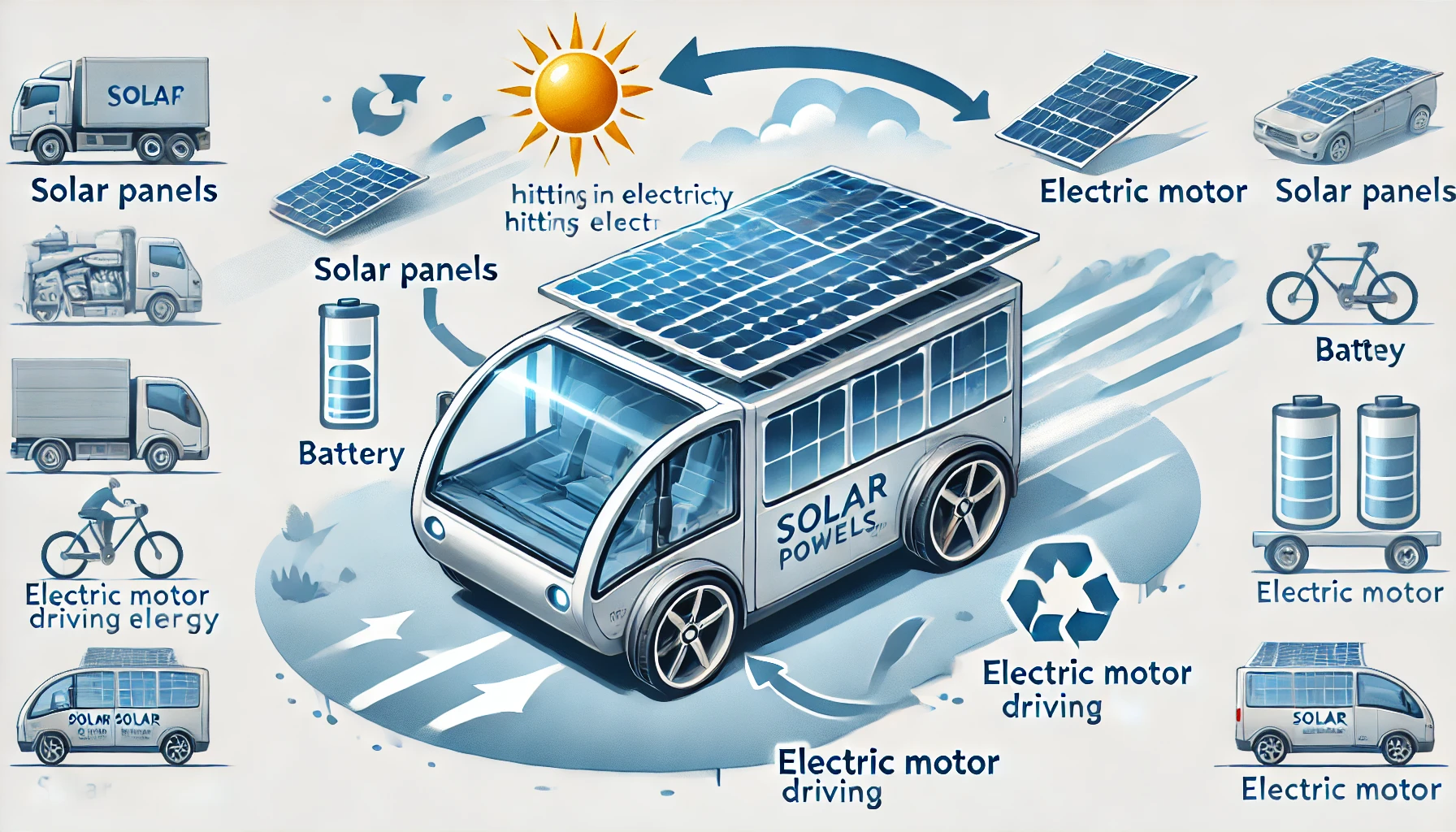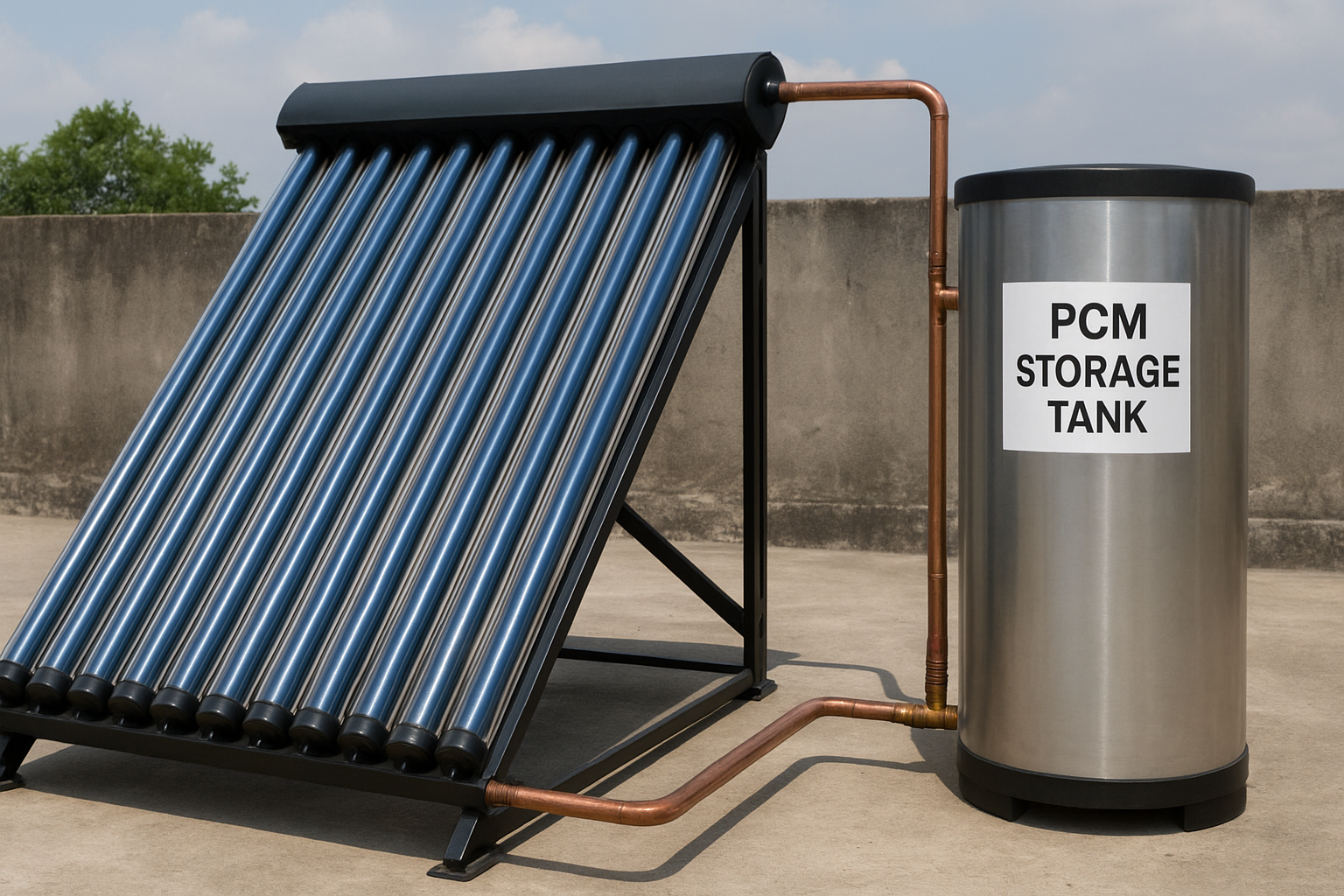 Introduction:
Introduction:
As the global demand for sustainable transportation increases, solar power presents a promising solution. Solar-powered vehicles harness sunlight to generate electricity, reducing reliance on fossil fuels and minimizing environmental impact. This project focuses on designing and building a prototype solar-powered vehicle, assessing its energy efficiency, practicality, and environmental benefits. By integrating photovoltaic (PV) cells on the vehicle, this project aims to produce a renewable-powered transport option suited for light commutes, particularly in sunny regions.
Abstract:
This project involves the design and creation of a solar-powered vehicle prototype. The prototype is equipped with photovoltaic panels that capture sunlight and convert it into electrical energy, stored in a battery system. This energy powers the vehicle’s electric motor, enabling movement. The project assesses the vehicle’s performance based on factors like energy consumption, speed, distance, and battery efficiency. Results indicate that solar power can effectively propel lightweight vehicles, demonstrating a viable eco-friendly alternative for short-distance travel.
Materials:
- Vehicle Frame and Body:
- Lightweight chassis (e.g., aluminum or carbon fiber)
- Wheels and axles for mobility
- Suspension system for stability
- Solar Panels:
- High-efficiency photovoltaic panels (suitable for converting sunlight to electrical energy)
- Battery System:
- Rechargeable lithium-ion battery for energy storage
- Electric Motor:
- Low-power DC motor compatible with the battery and solar input
- Charge Controller:
- Device to regulate energy flow from solar panels to the battery
- Wiring and Electrical Components:
- Conductive wires, connectors, and switches to build the circuit
- Microcontroller (optional):
- Arduino or similar board to manage functions such as speed control and energy monitoring
- Performance Measuring Tools:
- Multimeter to measure voltage and current
- Speedometer for tracking speed
- GPS for recording distance covered
Procedure:
- Vehicle Assembly:
- Construct a lightweight, aerodynamic frame to minimize energy usage. Install the wheels, axles, and suspension to ensure smooth mobility.
- Mounting Solar Panels:
- Attach PV panels on the roof or flat surfaces of the vehicle where they can receive maximum sunlight exposure.
- Electrical Connections:
- Connect the solar panels to the charge controller to manage charging. The controller should link to the battery and electric motor, forming a continuous power circuit.
- Battery Installation:
- Securely install the battery pack, ensuring it can be charged from both the solar panels and an auxiliary power source if necessary.
- Motor Integration:
- Attach the electric motor to the rear axle, ensuring it can drive the wheels. Connect the motor to the battery for direct power.
- Testing and Calibration:
- Perform initial testing under sunlight, monitoring power output from the PV panels and battery efficiency. Adjust the charge controller and monitor energy flow to optimize performance.
- Performance Measurement:
- Track speed, distance, and battery performance to evaluate the vehicle’s efficiency and determine the range achievable on solar energy.
Results:
The solar-powered vehicle prototype demonstrated effective movement using only solar-generated electricity. Under optimal sunlight, the PV panels provided sufficient energy to power the vehicle, reaching speeds of up to 20 km/h and covering short distances of up to 10 km on a single charge. Efficiency varied with sunlight intensity, with cloudy days reducing performance. The battery effectively stored excess energy for use when direct sunlight was unavailable.
Analysis:
The results indicate that solar power can reliably drive a lightweight vehicle, especially in sunny climates. The PV panels’ output was sufficient to recharge the battery while in use, providing consistent energy for short commutes. Factors such as vehicle weight, sunlight intensity, and battery capacity influenced the vehicle’s performance, suggesting room for optimization in solar panel efficiency and storage capacity.
Conclusion:
This project successfully demonstrates the feasibility of a solar-powered vehicle for light transportation. While current technology limits speed and distance, the prototype effectively showcases solar energy’s potential as a sustainable fuel source. With advancements in PV efficiency and battery technology, solar-powered vehicles may become a viable option for eco-friendly transportation. Future work could explore enhanced solar panel configurations, improved aerodynamics, and hybrid options to increase power and range, further advancing the potential of solar energy in transportation.






qy2uk8